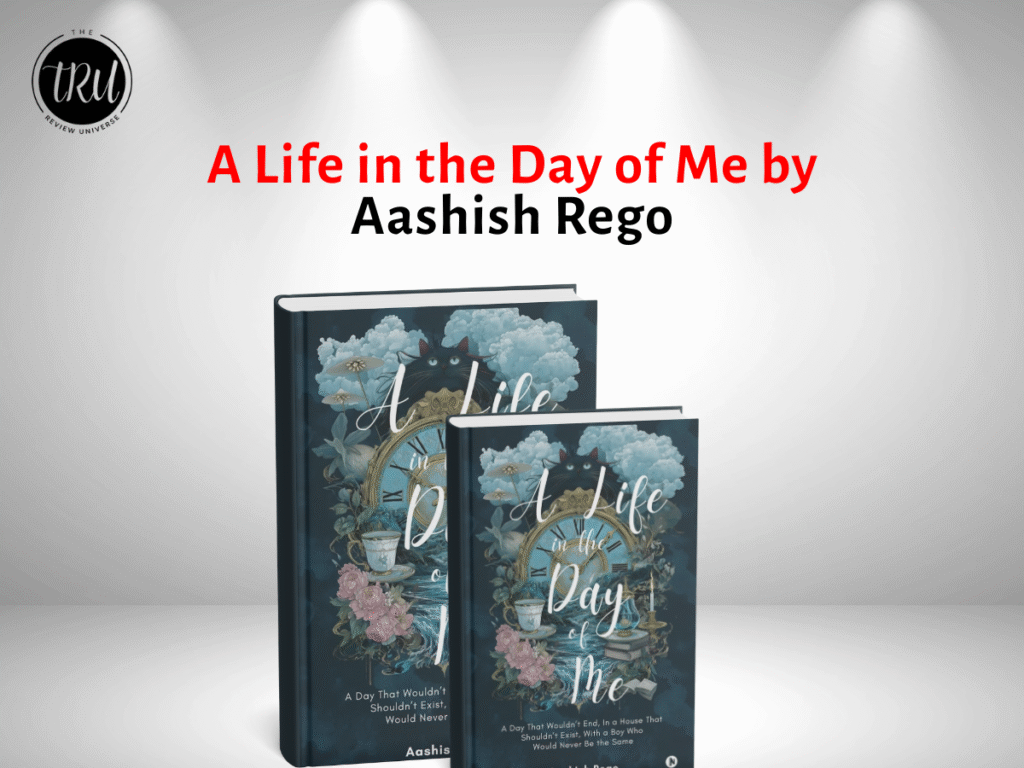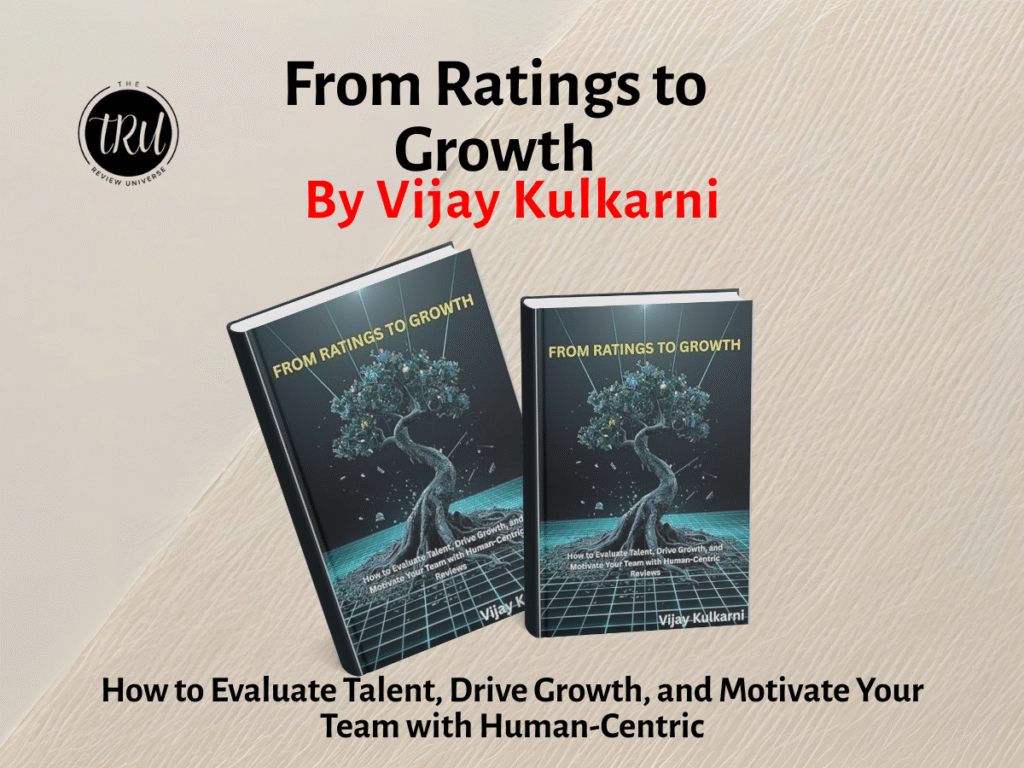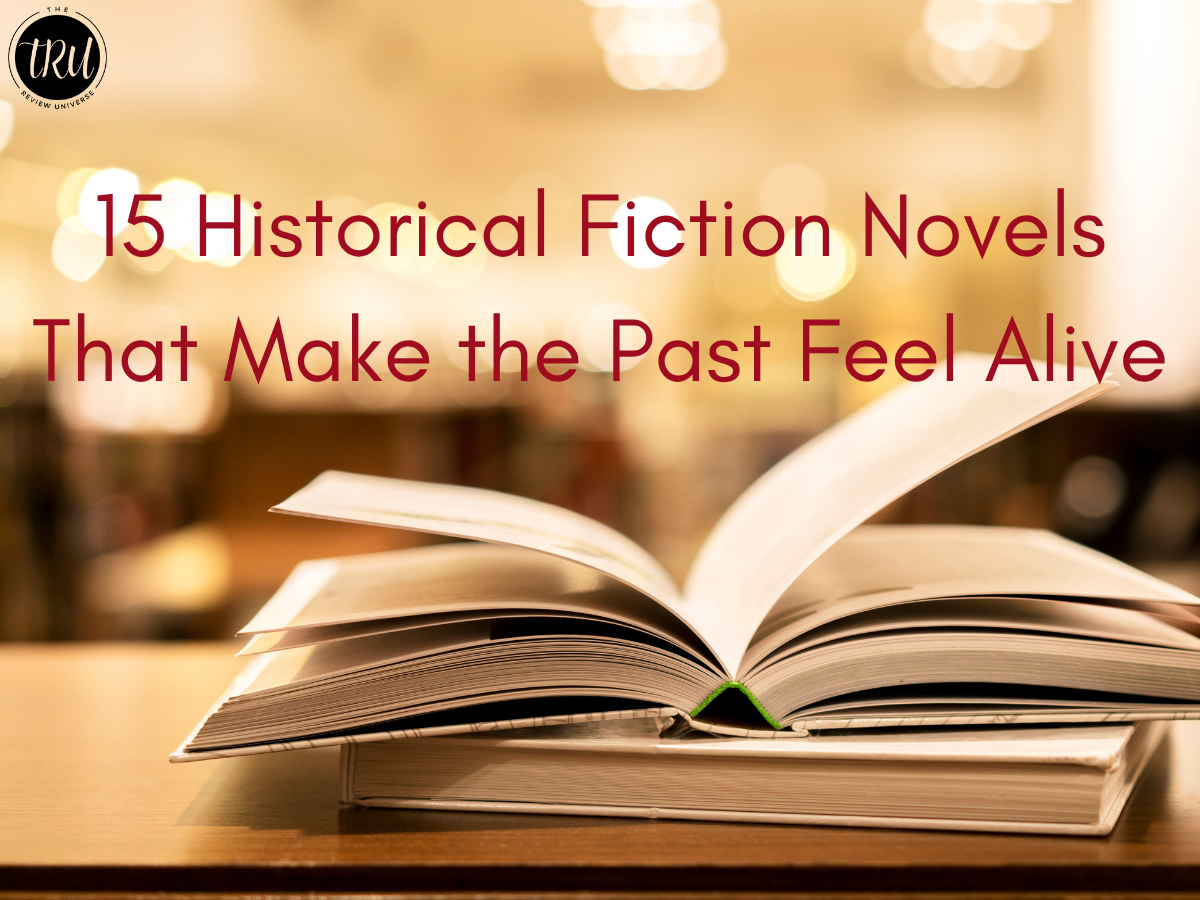
Venturing into Historical Fiction Novels That Make the Past Feel Alive!
Historical fiction is a literary genre in which the plot takes place in a setting located in the past, often featuring real historical events, periods, or figures mixed with fictional elements. These novels aim to bring history to life by exploring the emotional, cultural, and human aspects of past times. Historical fiction novels have a unique power to breathe life into the past, transforming distant events, cultures, and figures into vivid, emotionally resonant stories that feel immediate and real.
By blending meticulously researched historical detail with compelling narrative and character development, these novels bridge the gap between modern readers and bygone eras. Whether set in ancient civilizations, medieval kingdoms, war-torn landscapes, or revolutionary movements, historical fiction invites readers to experience the sights, struggles, and spirit of the past through the eyes of those who might have lived it. Through richly drawn settings and authentic voices, these stories not only illuminate history’s grand events but also capture the personal moments and human emotions that transcend time, making history not just informative, but deeply felt.
Historical fiction novels offer more than just stories; they serve as windows into the soul of a past era, humanizing history and making it resonate in the present. They immerse readers in richly detailed eras, cultures, and emotional truths. These novels succeed not just by recounting historical facts, but by evoking the emotional truth of lived experience, making distant times and places feel immediate and deeply human.
Historical Fiction Novels Matter
- It humanizes history, making abstract events and figures relatable.
- It often challenges official historical narratives, offering alternative or suppressed perspectives.
- It helps readers understand the complexity of past societies—and how they influence the present.
1. The Book Thief by Markus Zusak
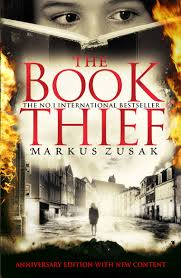
Narrated by Death, this WWII-era novel uses an unusual perspective to convey the emotional gravity of life in Nazi Germany. It focuses on a young girl who finds solace in books, illuminating the everyday human experiences during one of history’s darkest times.
The Book Thief is a Historical Fiction Novels by Markus Zusak. It is a powerful historical novel narrated by Death, set in Nazi Germany during World War II. It follows Liesel Meminger, a young girl sent to live with foster parents in a small town. Despite the harsh realities of war, Liesel finds solace in stealing books and sharing them with her neighbors and the Jewish man hiding in her basement.
As bombs fall and the Nazi regime tightens its grip, Liesel’s relationships deepen, especially with her foster father Hans, who teaches her to read, and her best friend Rudy. The story explores themes of courage, the power of words, and the impact of war on ordinary people. Liesel’s resilience shines as she witnesses both cruelty and kindness amid devastation. Tragedy strikes as the war reaches its climax, leading to loss and heartache. Yet, through it all, Liesel’s love for stories and humanity endures. The Book Thief is a haunting and hopeful tale about the strength of the human spirit in dark times.
2. Wolf Hall by Hilary Mantel
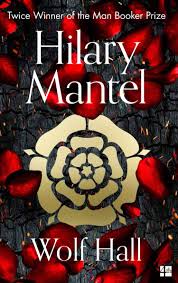
Mantel brings Tudor England vividly to life through the eyes of Thomas Cromwell, blending political intrigue with psychological depth. Her use of present-tense narrative makes historical figures feel contemporary and immediate.
Wolf Hall by Hilary Mantel, one of the Historical Fiction Novels, is a historical fiction novel that delves into the life of Thomas Cromwell, a key advisor to King Henry VIII in 16th-century England. Told through Cromwell’s perspective, the story traces his rise from a humble blacksmith’s son to one of the most powerful men in the Tudor court.
The novel explores political intrigue, religious upheaval, and the complex personalities surrounding the king, especially Henry’s marriage struggles and the break from the Catholic Church. Cromwell’s pragmatic, intelligent approach to navigating danger and shifting alliances highlights the ruthless nature of power. Mantel’s richly detailed prose and psychological insight bring this pivotal period of English history vividly to life. Wolf Hall is a gripping, character-driven exploration of ambition, loyalty, and survival in a turbulent era.
3. The Nightingale by Kristin Hannah
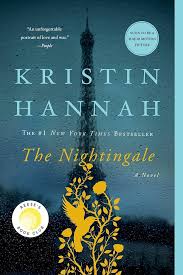
This one from the Historical Fiction Novels, is a story of two sisters resisting the Nazi occupation of France reveals the personal cost of war. Its emotional resonance and focus on women’s wartime roles create an intimate connection to history often overlooked in traditional accounts.
The Nightingale by Kristin Hannah is a historical fiction novel set during World War II in Nazi-occupied France, focusing on the lives of two sisters, Vianne and Isabelle Mauriac. Vianne struggles to protect her family and home as the war disrupts their quiet life, while Isabelle joins the French Resistance, risking everything to fight the occupiers and help downed Allied airmen escape.
The story explores themes of courage, sacrifice, and the resilience of women during wartime. Through harrowing trials, both sisters endure loss and danger, forging their own paths of survival and heroism. The Nightingale vividly portrays the emotional and physical hardships of war, highlighting the often overlooked bravery of women. It’s a poignant, moving tale about love, family, and the indomitable human spirit in the face of darkness.
4. The Pillars of the Earth by Ken Follett

Set in 12th-century England, this sweeping epic brings medieval life—its hardships, architecture, and politics—into full focus. The cathedral construction is a symbolic backbone to the richly detailed community life.
The Pillars of the Earth, one of the Historical Fiction Novels, by Ken Follett is a historical fiction epic set in 12th-century England, centered around the building of a grand cathedral in the fictional town of Kingsbridge. The novel weaves together the lives of several characters—Tom Builder, a master mason; Aliena, a noblewoman fighting to reclaim her family’s honor; and Prior Philip, a determined monk—whose fates intertwine amid political turmoil, war, and betrayal.
Against a backdrop of famine, civil war, and power struggles, the story explores themes of ambition, love, faith, and resilience. The cathedral’s construction symbolizes hope and perseverance in a time of darkness. Richly detailed and sweeping in scope, The Pillars of the Earth captures the struggles and triumphs of ordinary people shaping history. It’s a compelling saga of human endurance and the transformative power of vision.
5. Homegoing by Yaa Gyasi
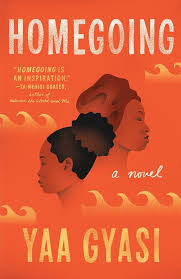
Spanning 300 years, this multigenerational saga traces the divergent fates of two sisters’ descendants in Ghana and America. Each chapter vividly immerses the reader in a specific time and place, showing how history ripples through families.
Homegoing is one of the Historical Fiction Novels by Yaa Gyasi, a multi-generational historical novel tracing the descendants of two half-sisters born in 18th-century Ghana—one sold into slavery and the other married to a British colonizer. The story spans three hundred years, moving between Ghana and America, exploring the lasting impact of the transatlantic slave trade on families and identities.
Each chapter follows a different descendant, revealing struggles with slavery, racism, displacement, and resilience. Through vivid storytelling, Homegoing examines themes of heritage, trauma, and the quest for belonging across continents and generations. Gyasi’s powerful narrative highlights how history shapes personal and collective lives, offering a profound meditation on the enduring bonds of family and culture.
6. The Underground Railroad by Colson Whitehead
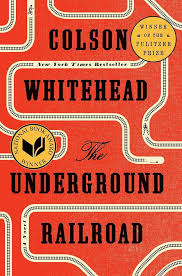
By reimagining the Underground Railroad as a literal train system, this novel blurs the line between history and allegory. It powerfully confronts the brutality of slavery while inviting readers to consider its psychological and generational impact.
The Underground Railroad by Colson Whitehead is a powerful historical fiction novel that reimagines the Underground Railroad as an actual subterranean train system helping enslaved people escape bondage in the antebellum South. The story follows Cora, a young enslaved woman who flees a Georgia plantation in search of freedom.
Along her journey, she faces brutal hardships, violent pursuers, and shifting landscapes that expose the systemic cruelty of slavery and racism. Each state Cora passes through reveals different forms of oppression and resistance. Whitehead blends historical reality with magical realism to highlight the horrors of slavery and the indomitable will to survive. The novel explores themes of freedom, identity, and the cost of courage. The Underground Railroad , one the famous Historical Fiction Novels, is a haunting, thought-provoking tale about the fight for liberation and the scars left by America’s past.
7. The Paris Library by Janet Skeslien Charles
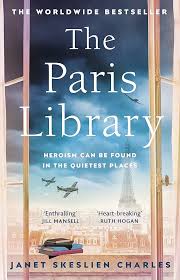
Based on true events, this novel captures the intellectual resistance of librarians in occupied Paris. It highlights the quiet bravery of ordinary people and the enduring power of books during wartime.
The Paris Library by Janet Skeslien Charles is one of the Historical Fiction Novels set during World War II, centered around the true story of the American Library in Paris and its courageous staff. The story alternates between Odile, a young librarian in 1940s Nazi-occupied Paris who becomes involved in the French Resistance, and Lily, a modern-day librarian in Montana uncovering Odile’s hidden past. Amid the dangers of war, Odile risks everything to protect books and help those persecuted by the Nazis, showing the power of literature and hope.
The novel explores themes of friendship, bravery, love, and the enduring impact of libraries as sanctuaries of freedom. Through vivid storytelling and richly drawn characters, The Paris Library honors the unsung heroes who fought oppression with courage and compassion.
8. Kindred by Octavia E. Butler
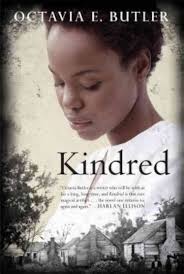
A modern Black woman is transported back to antebellum Maryland, forcing her—and readers—to experience slavery firsthand. Its blend of speculative fiction and historical realism makes the horrors of the past uncomfortably present. Kindred by Octavia E. Butler is a groundbreaking science fiction novel and one of the Historical Fiction Novels that blends time travel with historical fiction to explore slavery’s brutal reality.
The story follows Dana, a Black woman in 1976 California, who is mysteriously pulled back in time to early 19th-century Maryland whenever her ancestor, a white plantation owner’s son, is in danger. Dana must navigate the dangers of slavery while confronting the complex and often painful connections between her present and past. The novel tackles themes of power, identity, race, and survival, forcing Dana—and readers—to face the legacy of slavery firsthand. Kindred is a powerful, unsettling exploration of history’s impact on the present and the strength required to endure trauma across generations.
9. Atonement by Ian McEwan
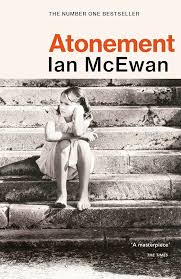
From Historical Fiction Novels, Set before and during WWII, this novel examines love, guilt, and the consequences of a single lie. The backdrop of war magnifies the personal stakes and highlights the fragility of truth in both personal and historical memory. Atonement by Ian McEwan is a literary fiction novel that explores themes of guilt, love, and the consequences of a single, life-altering mistake.
The story centers on Briony Tallis, a young girl whose false accusation dramatically changes the lives of her sister Cecilia and Cecilia’s lover, Robbie Turner. Set before and during World War II, the novel examines the impact of Briony’s actions on all three characters as they grapple with lost love, shattered trust, and the harsh realities of war. Told with intricate narrative shifts and deep psychological insight, Atonement delves into memory, forgiveness, and the possibility—or impossibility—of redemption. It’s a haunting exploration of how misunderstandings and guilt shape human lives across decades.
10. Girl with a Pearl Earring by Tracy Chevalier
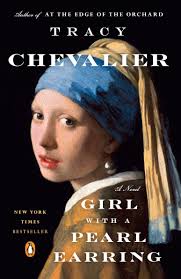
Inspired by the Vermeer painting, this novel immerses readers in 17th-century Delft through the eyes of a servant girl. It captures the social dynamics, artistry, and domestic life of the time with subtle detail.
Girl with a Pearl Earring by Tracy Chevalier is one of the Historical Fiction Novels inspired by the famous painting by Johannes Vermeer. The story follows Griet, a young maid working in Vermeer’s household in 17th-century Delft, Netherlands. As Griet becomes involved in the artist’s world, she navigates the complexities of class, art, and forbidden attraction. The novel explores themes of beauty, power, and silence, highlighting Griet’s inner strength and resilience amid social constraints. Through rich descriptions and vivid characterizations, Chevalier imagines the untold story behind the iconic painting, blending history and fiction to explore art’s mysterious influence on life and identity.
11. The Red Tent by Anita Diamant
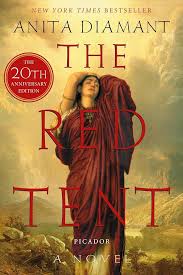
A feminist retelling of biblical times, it gives voice to Dinah, a minor character in Genesis. The novel reconstructs ancient womanhood, rituals, and communal life in a way that is both culturally rich and emotionally grounded.
The Red Tent is one the reknown Historical Fiction Novels, by Anita Diamant. It is a historical fiction novel that reimagines the biblical story of Dinah, daughter of Jacob and Leah. Told from Dinah’s perspective, the novel explores the lives, traditions, and struggles of women in ancient times, focusing on sisterhood, motherhood, and female empowerment.
Central to the story is the red tent—a place where women gather during menstruation and childbirth, symbolizing a sacred female space of support and storytelling. Through rich, intimate storytelling, The Red Tent gives voice to women often silent in history, highlighting their strength, resilience, and bonds in a patriarchal world. The novel blends myth, history, and feminism to create a vivid, emotional portrait of womanhood and faith.
12. I, Claudius by Robert Graves
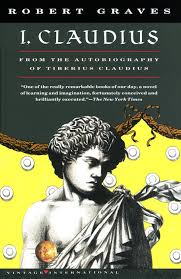
Written as an autobiographical memoir of the Roman Emperor Claudius, the novel turns Roman history into a riveting tale of power, betrayal, and survival, all told in a sharply human and ironic voice.
I, Claudius by Robert Graves is a historical fiction novel written as an autobiographical memoir of the Roman Emperor Claudius. The story chronicles Claudius’s unlikely rise from a stammering, overlooked member of the Julio-Claudian dynasty to becoming emperor. Narrated with wit and insight, Claudius reveals the brutal intrigues, assassinations, and power struggles that define the Roman imperial family, exposing corruption and deceit behind the throne.
Through Claudius’s eyes, readers witness the complexities of ancient Rome’s politics, as well as his own survival through intelligence and caution. The novel blends historical fact with vivid storytelling, painting a gripping portrait of ambition, betrayal, and the burdens of power. I, Claudius is a classic exploration of empire, history, and the resilience of an underestimated figure.
13. A Fine Balance by Rohinton Mistry
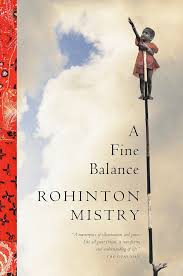
Set in 1970s India during the Emergency, this novel captures the lives of four characters drawn together by fate. It reveals the deep political and social unrest of the time with emotional poignancy and keen realism.
A Fine Balance by Rohinton Mistry is a sweeping historical fiction novel set in 1970s India during the turbulent Emergency period. The story follows four diverse characters—a young student, a tailor, and two tailors’ assistants—who come together as unlikely housemates in a cramped apartment in Mumbai.
Against a backdrop of political unrest, poverty, and social injustice, the novel explores themes of survival, friendship, and resilience amid hardship. Mistry’s rich, compassionate storytelling captures the struggles of ordinary people facing oppression, caste discrimination, and personal tragedy. Through their interconnected lives, A Fine Balance reveals the fragility and strength of human spirit, the complexity of India’s social fabric, and the enduring hope for dignity and justice. It’s a poignant, deeply moving portrait of life’s hardships and the bonds that sustain us.
14. All the Light We Cannot See by Anthony Doerr
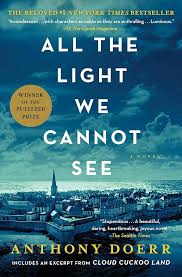
Focusing on a blind French girl and a German soldier during WWII, this beautifully written novel conveys both the grandeur and intimacy of wartime Europe, with lyrical prose and deep humanity.
All the Light We Cannot See by Anthony Doerr is a beautifully crafted historical fiction novel set during World War II. It follows two main characters: Marie-Laure, a blind French girl whose father works at the Paris Museum of Natural History, and Werner, a German orphan with a talent for engineering. Their lives converge in the walled city of Saint-Malo as the war intensifies.
The novel explores themes of resilience, hope, and the unseen connections between people amidst the horrors of conflict. Doerr’s lyrical prose highlights the power of kindness, courage, and the human spirit. With vivid imagery and richly developed characters, All the Light We Cannot See is a poignant meditation on survival and the ways light persists in darkness.
15. March by Geraldine Brooks
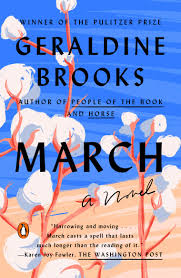
This companion to Little Women follows the March sisters’ father during the Civil War, offering insight into moral conflict, abolitionism, and personal sacrifice. It sheds new light on an era through a familiar literary figure.
March by John Lewis, Andrew Aydin, and Nate Powell is a graphic memoir trilogy that chronicles the life and activism of civil rights leader John Lewis. Through vivid illustrations and personal storytelling, the series traces Lewis’s journey from his childhood in rural Alabama to becoming a key figure in the fight for racial equality in the 1960s.
It covers historic events like the Nashville sit-ins, the Freedom Rides, and the Selma to Montgomery marches, highlighting the courage and sacrifice involved in the civil rights movement. March blends biography, history, and memoir to offer an inspiring, firsthand account of nonviolent resistance and social justice. The trilogy emphasizes themes of hope, resilience, and the ongoing struggle for civil rights in America. It’s a powerful educational tool and tribute to a legendary activist’s legacy.
Look into our Blog https://thereviewuniverse.com/blog/ for more Articles!
Read More Article : 15 Must-Read Crime & Thriller Novels for Fans of Suspense



